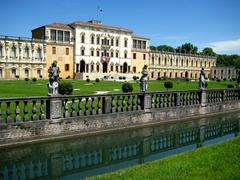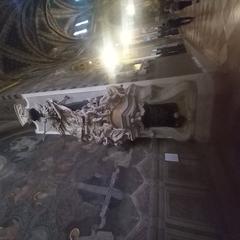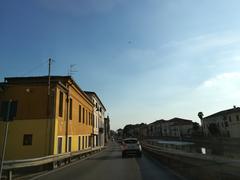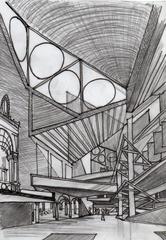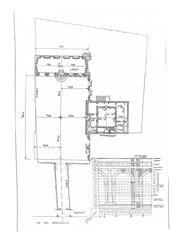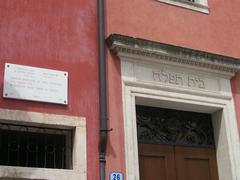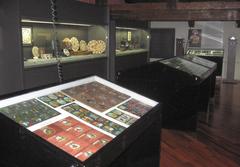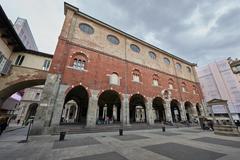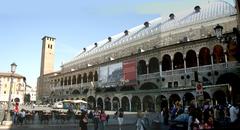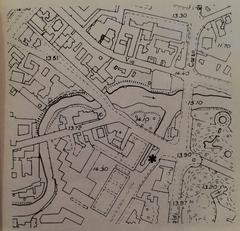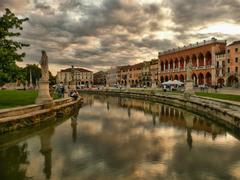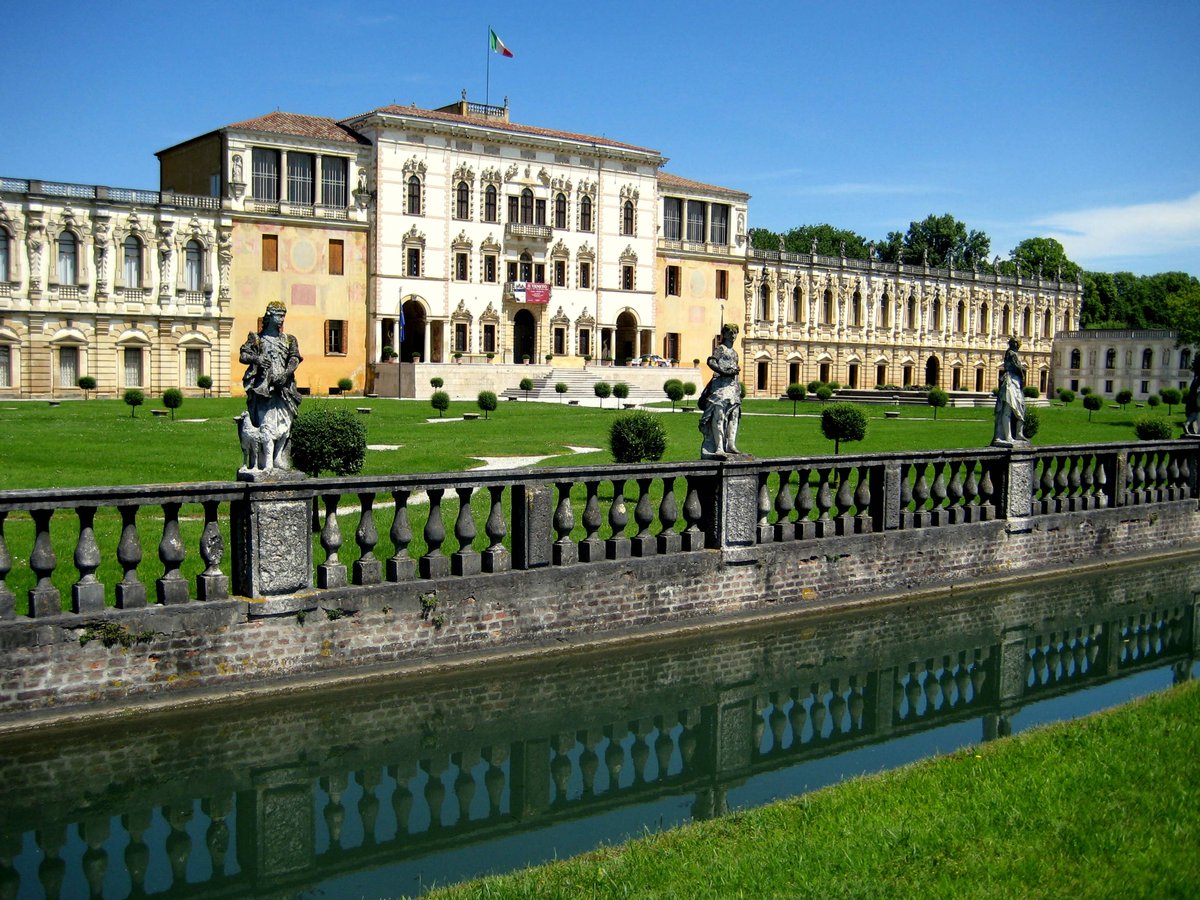
Comprehensive Guide to Visiting Villa Contarini in Padua, Italy
Date: 18/07/2024
Introduction
Nestled in Piazzola sul Brenta, in the heart of Italy’s Veneto region, Villa Contarini stands as a magnificent testament to the opulence and grandeur of the Venetian Republic. Often referred to as the “Queen of Venetian Villas,” Villa Contarini offers an unparalleled glimpse into the architectural brilliance, cultural richness, and historical significance of the Venetian era. This historic villa is deeply intertwined with the legacies of illustrious families such as the Contarini, the Duke of Savoy, the Camerini family, and the Habsburgs, each of whom contributed to its transformation and legacy over the centuries (Exploring Villa Contarini).
The villa’s architectural journey began in the mid-16th century when the Contarini family commissioned the renowned architect Andrea Palladio. Although Palladio’s original vision was never fully realized, his influence is evident in the villa’s harmonious proportions and classical elements. Subsequent owners, including the Duke of Savoy and the Camerini family, expanded and enriched the villa, introducing Baroque elements and transforming it into a vibrant cultural hub. The Habsburgs further elevated its prestige by using it as a royal retreat. Today, Villa Contarini is not merely a historical relic but a thriving cultural center open to the public, encapsulating the grandeur, artistic heritage, and historical depth of the Venetian Republic (Explore Villa Contarini).
Table of Contents
- Introduction
- Early Beginnings - The Contarini Family and Their Architectural Ambition (16th Century)
- A Transformation Unfolds - From Villa to Ducal Residence (17th Century)
- The Legacy of the Camerini Family - A Century of Cultural Flourishing (18th Century)
- A Respite for Royalty - The Habsburg Connection (19th Century)
- Preservation and Rebirth - Villa Contarini in the 20th Century and Beyond
- Visitor Information
- Exploring the Villa
- The Gardens
- Special Events and Tours
- Museums and Exhibits
- Nearby Attractions
- Accessibility
- Photographic Spots
- Food and Drinks
- Accommodation
- Frequently Asked Questions (FAQ)
- Conclusion
Early Beginnings - The Contarini Family and Their Architectural Ambition (16th Century)
The story of Villa Contarini begins in the mid-16th century, a period when the Venetian Republic was at the zenith of its power and influence. The Contarini family, a prominent Venetian dynasty that had produced doges, statesmen, and merchants, commissioned the construction of a grand villa in Piazzola sul Brenta.
This ambitious project, entrusted to the renowned architect Andrea Palladio, aimed to create a residence that would reflect the family’s status and embody the ideals of Renaissance architecture. While Palladio’s original design for a magnificent palace was never fully realized, his influence can still be seen in the villa’s harmonious proportions and classical elements.
A Transformation Unfolds - From Villa to Ducal Residence (17th Century)
The 17th century marked a turning point in the villa’s history. It was acquired by the powerful Duke of Savoy, Charles Emmanuel I, who envisioned transforming it into a lavish ducal residence. This ambitious undertaking saw significant expansions and renovations, shaping the villa into the sprawling complex we see today.
Notable additions included the construction of the imposing central body, flanked by two symmetrical wings, and the creation of a magnificent park. This period also witnessed the villa becoming a hub of courtly life, hosting lavish festivities, theatrical performances, and attracting artists, intellectuals, and dignitaries from across Europe.
The Legacy of the Camerini Family - A Century of Cultural Flourishing (18th Century)
In the 18th century, Villa Contarini passed into the hands of the Camerini family, who left their own indelible mark on its legacy. Under their patronage, the villa experienced a period of remarkable cultural flourishing.
The Camerini family, known for their refined taste and intellectual pursuits, transformed the villa into a vibrant center for the arts and sciences. They expanded the library, amassing a vast collection of books and manuscripts, and established a renowned printing press within the villa’s walls.
A Respite for Royalty - The Habsburg Connection (19th Century)
The 19th century saw Villa Contarini become a favored retreat for European royalty. The Habsburg family, who ruled over the vast Austro-Hungarian Empire, acquired the villa and used it as a summer residence.
Empress Elisabeth of Austria, affectionately known as Sisi, was particularly fond of the villa and its tranquil surroundings. During her visits, the villa came alive with courtly protocol and social gatherings, further cementing its reputation as a place of prestige and elegance.
Preservation and Rebirth - Villa Contarini in the 20th Century and Beyond
The 20th century brought about significant changes in the ownership and purpose of Villa Contarini. After serving as a military hospital during World War I, the villa was acquired by the Italian state in 1929.
This marked the beginning of a concerted effort to preserve and restore the villa to its former glory. Extensive restoration projects were undertaken, breathing new life into the aging structure and its surrounding park. Today, Villa Contarini stands as a testament to the enduring legacy of the Venetian Republic and the architectural brilliance of its era.
Visitor Information
Ticket Prices
- General Admission: €10
- Reduced Admission (students, seniors): €5
- Children under 12: Free
Opening Hours
- Monday to Friday: 10:00 AM - 6:00 PM
- Saturday and Sunday: 10:00 AM - 7:00 PM
- Closed on public holidays
Travel Tips
Best Times to Visit
The best times to visit Villa Contarini are during the spring and autumn months when the weather is mild, and the gardens are in full bloom.
How to Get There
Villa Contarini is easily accessible by car, with ample parking available on-site. It is also well-connected by public transport, with regular buses running from Padua and Venice.
Exploring the Villa
The Villa
Architectural Marvel: Villa Contarini’s architecture is a testament to its rich history, showcasing a blend of styles from various periods. The original structure, dating back to the 16th century, reflects the elegant Venetian Renaissance style. Later additions, particularly in the 17th century, introduced elements of Baroque architecture, resulting in a harmonious fusion of grandeur and sophistication.
The Central Body: The heart of the villa is the impressive central body, or corpo centrale. This section, characterized by its symmetrical facade and imposing presence, houses some of the villa’s most significant rooms.
The Wings: Extending from the central body are two wings, each with its own unique charm. The east wing, known as the barchessa di levante, features a distinctive portico and once served as a service area. The west wing, or barchessa di ponente, mirrors the east wing’s design and housed the villa’s stables.
The Interior
A Journey Through Time: Stepping inside Villa Contarini is akin to embarking on a journey through time. The villa’s interior is adorned with exquisite frescoes, intricate stuccos, and opulent furnishings that reflect the artistic and cultural influences of the Venetian Republic.
The Hall of Arts: Among the most impressive rooms is the Hall of Arts, or Salone delle Arti. This grand hall, with its soaring ceilings and walls adorned with allegorical frescoes, served as a space for receptions and entertainment.
The Chapel: The villa’s private chapel, dedicated to St. George, is a testament to the Contarini family’s piety. The chapel features beautiful frescoes and a serene ambiance, offering a glimpse into the religious practices of the time.
The Nymphaeum: A unique feature of Villa Contarini is its Nymphaeum, a grotto-like space adorned with shells, statues, and fountains. This whimsical space, inspired by ancient Roman architecture, provided a cool and refreshing retreat during the hot summer months.
The Gardens
An Oasis of Tranquility: The gardens of Villa Contarini are an integral part of the villa’s allure, offering a serene escape from the bustling city. Designed in the Italian garden style, the gardens feature geometric layouts, manicured hedges, and a harmonious blend of nature and artistry.
The Secret Garden: Tucked away within the larger garden is the Secret Garden, or Giardino Segreto. This secluded area, accessible through hidden pathways, provides a sense of mystery and intrigue.
The Water Features: Water plays a significant role in the gardens’ design, with fountains, canals, and ponds adding to the tranquil ambiance. The cascading fountain at the back of the villa is a particular highlight, creating a soothing soundtrack to a leisurely stroll through the gardens.
Special Events and Tours
Villa Contarini offers guided tours that provide in-depth insights into its history and architecture. The villa also hosts special events such as concerts, art exhibitions, and theatrical performances.
Museums and Exhibits
The villa houses a museum showcasing a rich collection of paintings, sculptures, furniture, and historical artifacts that highlight its artistic heritage.
Nearby Attractions
- Villa Pisani: Another grand villa located just a short drive away.
- Padua: A historic city with beautiful architecture and rich cultural heritage.
- Brenta River: Offers scenic boat tours and picturesque views.
Accessibility
Villa Contarini is committed to ensuring accessibility for all visitors. The villa is equipped with ramps and elevators to accommodate visitors with disabilities.
Photographic Spots
Some of the best spots for photography include the grand staircase, the opulent ballroom, and the tranquil gardens with their beautiful fountains and statues.
Food and Drinks
A café located within the villa complex offers refreshments, light snacks, and coffee. Several restaurants and cafés are situated in Piazzola sul Brenta, within walking distance of the villa, offering a range of dining options.
Accommodation
While Villa Contarini itself doesn’t offer accommodation, several hotels and guesthouses are available in Piazzola sul Brenta and the surrounding area, providing convenient options for overnight stays.
Frequently Asked Questions (FAQ)
Q: What are the visiting hours for Villa Contarini?
A: The villa is open Monday to Friday from 10:00 AM to 6:00 PM, and Saturday and Sunday from 10:00 AM to 7:00 PM. It is closed on public holidays.
Q: How much does it cost to visit Villa Contarini?
A: General admission is €10, reduced admission for students and seniors is €5, and children under 12 can enter for free.
Q: Are there any special events held at the villa?
A: Yes, Villa Contarini hosts a variety of special events, including concerts, art exhibitions, and theatrical performances.
Conclusion
Villa Contarini is more than just a historical monument; it is a living testament to the cultural and architectural splendor of the Venetian Republic. From its early beginnings under the Contarini family to its transformation into a ducal residence and a royal retreat, the villa’s rich history is a tapestry of artistic and cultural flourishing. The extensive efforts in the 20th century to preserve and restore Villa Contarini have ensured that its legacy continues to thrive, offering visitors an immersive experience into its opulent past.
Today, Villa Contarini stands as a vibrant cultural hub, attracting visitors from around the world. Whether you are wandering through its grand halls adorned with frescoes and stuccos, exploring the serene gardens with their intricate designs, or attending one of the many events hosted at the villa, there is something for everyone to enjoy. Its commitment to accessibility and the variety of guided tours and special events make it a must-visit destination for anyone interested in the rich cultural heritage of the Veneto region (Visiting Villa Contarini).
Call to Action
Stay connected and never miss an update. Download our mobile app, check out related posts on our website, and follow us on social media for the latest news and events at Villa Contarini.
